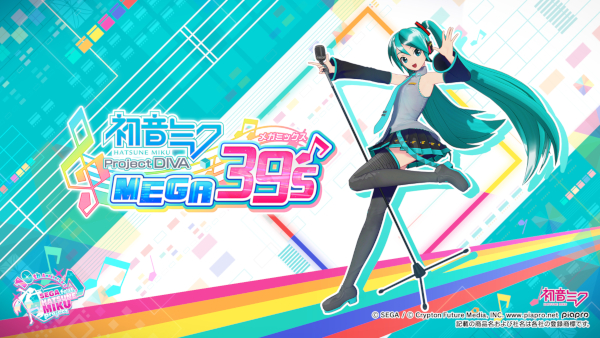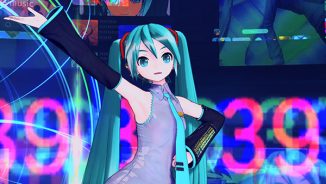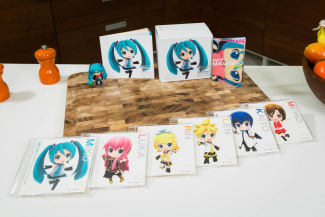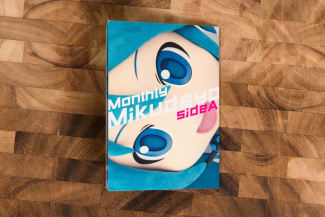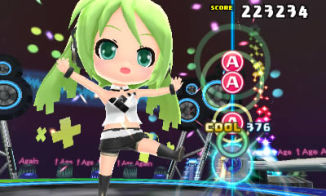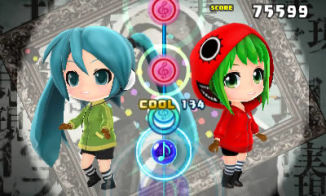
Hatsune Miku: Project Mirai DX, like several other Hatsune Miku music game titles, is a game that many fans thought would likely never make its way overseas. At first we were hoping one of the first two titles, Project Mirai (2012) or Mirai 2 (2013) would somehow manage to make its way to the West, since support for the Project Diva series as a whole was starting to strengthen. What we weren’t expecting was an all-new (sort of) game title in the Mirai series, specifically for the West.
While it didn’t end up remaining a Western-exclusive, and even got pushed back to 3 months after the Japanese release, the game is finally here, and brings what Hatsune Miku fans have been wanting from the Project Mirai series, and so much more. Hatsune Miku, Kagamine Rin and Len, Kaito, Meiko, Luka and even Megpoid Gumi all come together to make what is easily one of the most enjoyable Hatsune Miku rhythm game experiences, and likely one of the best music games overall on the Nintendo 3DS.
As a Project Mirai title, the game differs from the Project Diva series primarily by its artistic style: The characters are modeled in SD (super deformed) style, to look exactly like the popular Nendoroid line of figures from Good Smile Company. This is a design choice that no doubt caters to Hatsune Miku fans that can’t resist her cute sharm, which is now magnified by this look.
You start off the game by choosing your starting character, and then you’re greeted by the main screen of your chosen character in their basic apartment. There isn’t much here yet, but you’ll start to unlock various room accessories, and even outfits, as you play the game! You will see Gumi, another Vocaloid and playable character, come and visit you in your room from time to time to offer gifts, and hints/advice to help you with playing the game. Here is a summary of the main screen options:
Hang Out: Interact with the character you’re currently visiting, give them a spending allowance, offer snacks, or even play a minigame of “Mikuversi”, a special version of the classic board game “Reversi”! But watch out: As you get better, so will your opponent! Spending more time with a partner will strengthen your relationship and unlock new more motions/interactions. The first snack I offered my partner was the “roulette Sushi”, and let’s just say Miku’s reaction was priceless when she ate the hot piece of Sushi.
Dress-Up: As you unlock and purchase new outfits for your characters, you can freely change the outfit they wear on the home screen. There’s over 100 outfits that can be unlocked!
Remodel: As you unlock and purchase room accessories, you can decorate each character’s rooms to your liking! Different rooms offer different item arrangement options.
Alarm: Set an alarm and wake up along with your favorite Vocaloid!
Partner: Change which partner you’re visiting with.
Rhythm Game: Play the rhythm game mode. There are both Button and Tap gameplay styles to choose from. There are 48 total songs to unlock and choose from with three levels of difficulty, and an unlockable 4th level of difficulty for some songs. This means there is a total of nearly 300 different play combinations for this mode alone! I recommend changing the button colors if you’re a seasoned Project Diva player, to avoid confusion.
Puyo Puyo 39: A special Miku version of the popular SEGA puzzle game, which can be played against AI or friends over local wifi!
Profiles: This is essentially your own in-game profile card, as well as your friends list for sharing data with friends that also play Project Mirai DX. You can share custom songs, dances and messages!
Photos: View the screenshot gallery.
Stamps: Essentially your “achievements” tracker. Unlocking more stamps also gives you more tag-lines to use for your profile cards.
Options: View your game progress, change your Mirai username, and view unlocked special videos.
Music Maker: Create a custom tune with your partner, along with various instrument choices. You can attach a custom tune to your profile card. Get creative!
Go Out: Visit the Dance Studio, Department Store, Mirai Theater, AR Mode, or take your partner on a trip to exotic places!
Rhythm Game (Button Mode)
Button mode of the rhythm game is by far the most difficult of the two gameplay styles, with more complex button patterns and stricter timing for button accuracy. Depending on the chosen difficulty, more of the X, Y, B, A and arrow keys will appear on screen. Each song will have instances of holds and double presses, although you can choose to substitute arrows for the associated letter, or vice versa, when only one symbol needs to be pressed. The hold notes with a rainbow texture are “spin holds”, where you can spin the analog stick to earn bonus Mirai Points during the hold.
Rhythm Game (Tap Mode)
While being easier to play compared to button mode, this game mode does a few things differently to make this style just as enjoyable (if not more-so). There’s no “double press”, since you can only tap one color section at a time. However, this mode instead adds “swipe” notes, where you must hold and swipe the stylus in the indicated direction. If you continue to hold the stylus down before each swipe, you will create a “chain”, granting additional bonus points. This can even allow finishing scores of over 100%! Spin holds work in a similar way, with the difference being you now spin using the stylus instead of the analog stick.
Wait… There’s more?!
Due to a tight schedule, I was not able to go as in-depth with the game as I wanted to, and didn’t go far beyond unlocking all songs on the massive tracklist (this alone takes a considerable amount of time if you’re aiming for decent scores in the process). At least, not in time for this review. So I’d actually like to take the time to explain more game details in the comments below, should you have any! Is there anything from the game you’d like to see or know about? Feel free to ask!
And if you’d like to grab the game yourself, it will be available in-stores and on the Nintendo e-Shop on September 8th for North America, and September 11th for Europe! Early preorders will provide a bonus Miku wallet strap, while ALL copies of the game will come bundled with 19 AR cards!
If you’d like to give the game a try beforehand, you can grab the free game demo from the Nintendo e-Shop, which offers gameplay of LOL -lots of laugh- and Senbonzakura on Easy, Normal and Hard difficulties to help you get warmed up.
